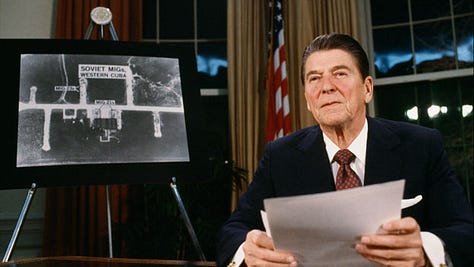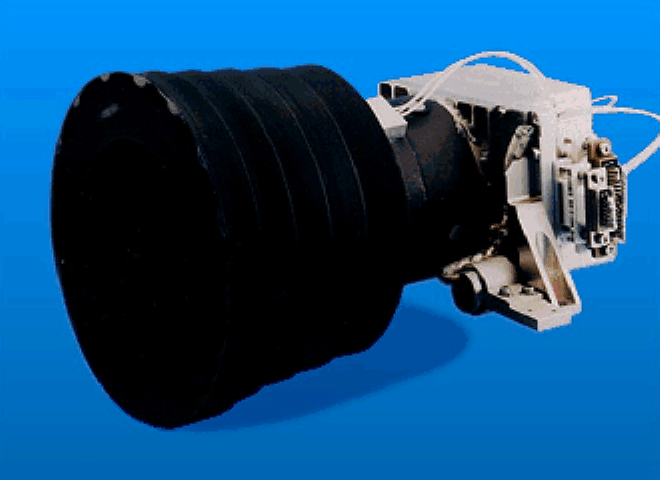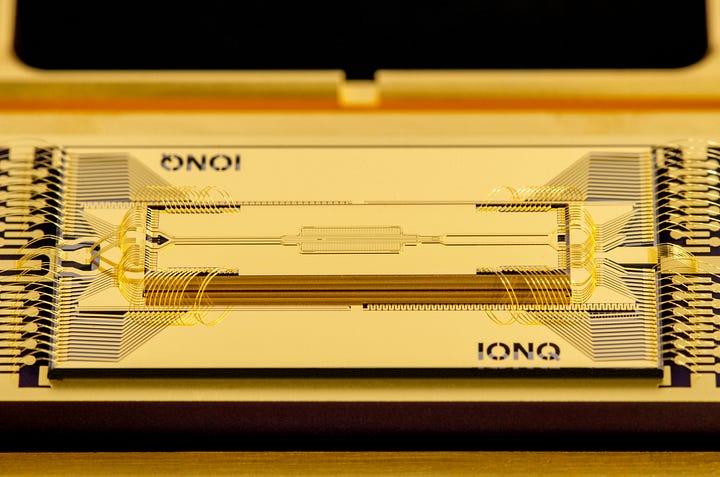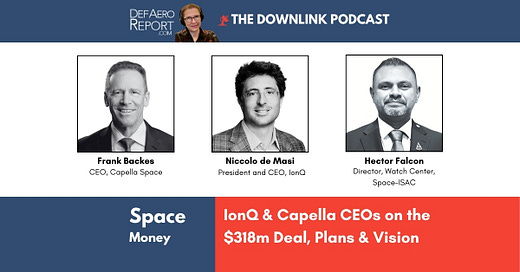Hey there!
President Donald Trump on Tuesday announced that his administration has selected a Next Generation Missile Defense, a.k.a. Golden Dome, architecture, agreed on a timeline, and chosen the person who is responsible for orchestrating its development, deployment, and operational readiness.
“We'll have it done in about three years. Once fully constructed, the Golden Dome will be capable of intercepting missiles even if they are launched from other sides of the world and even if they are launched from space, and we will have the best system ever built” Trump said from the Oval Office, which was adorned with the portrait of President Ronald Reagan.

In 1983, President Ronald Reagan started a similar missile defense program, called the Strategic Defense Initiative (SDI), which aimed to protect the United States from nuclear attacks by intercepting incoming missiles using space-based systems. Nicknamed "Star Wars," the program sought to create a shield that would also render nuclear weapons "impotent and obsolete."
While the space-based part of the plan never fully materialized as originally envisioned, due to technological challenges and the end of the Cold War, many of the space technologies developed under the initiative have been perfected and are used in space systems today. Additionally, today’s Missile Defense Agency was born out of the Strategic Defense Initiative Office, or SDIO.



Trump said, “We will truly be completing the job that President Reagan started 40 years ago, forever ending the missile threat to the American homeland and the success rate is very close to 100 percent, which is incredible when you think of it, you're shooting bullets out of the air. I'm also pleased to report that the One Big, Beautiful Bill will include $25 billion for the Golden Dome to help construction get underway.
Let’s briefly look at where the rubber hits the road on this project:
What: This began as a presidential order issued on January 27. The March 28 deadline to submit proposals on what the architecture (what this will end up being and how it will operate in concert with other missile defense systems) could be was blown, according to statements the Chief of Space Operations made while at the Space Symposium in April.
Upshot from yesterday: The Department of Defense finally submitted at least one proposal and the president selected one. The decision will now drive requirements for space capabilities; technology development and testing; procurement and acquisitions; and a lot of high-value contracts.


When: Trump said that the “Golden Dome” must be operational by the end of his term, or January 2029.
Upshot: This is an ambitious deadline, but as my podcast guests have said, pointing to the Clementine Mission (a DOD-NASA mission), getting at least a demonstration completed in roughly two years is possible if all concerned are willing and have the pot of money required.
How much: Speaking of money, the president said yesterday that the budget reconciliation bill, that is currently being debated by Congress, contains $25b for this initiative. Trump said, “That's the initial sort of a down, [de]posit. And we have -- probably you're talking about -- general, we're talking about $175 billion, total cost of this when it's completed.“
On May 5, the Congressional Budget Office wrote, “The total estimated cost of deploying and operating the SBI constellation for 20 years to fall from $264 billion to $161 billion (in 2025 dollars). For the highest-cost alternative that CBO examines, the total estimate would fall from $831 billion to $542 billion.”
Upshot: Experts I have spoken with believe that it will be difficult to spend or contract work totaling $25b in 12 months. However, that certainly does put pressure on acquisition officers to try, as whatever is left over is vulnerable to being nixed or allocated elsewhere. This is a massive opportunity for space businesses that are nimble and can execute.


Who: Now this is what I think is the most interesting and perhaps most important. Trump named U.S. Space Force Vice Chief of Space Operations Gen. Michael Guetlein to lead “Golden Dome”. He’s a 57-year-old, acquisitions officer with a mechanical engineering degree, Missile Defense Agency experience, and a 2011 Secretary of Defense Corporate Fellowship. And where did he perform this fellowship? … SpaceX headquarters in Hawthorne, Calif.
Upshot: Choosing a Space Force officer over someone from MDA likely means the U.S. Space Force has taken the first seat lead for actualizing this gargantuan, extremely-well-funded, program. I’m not saying MDA has been shut out, but it seems clear that the agency, despite its years of experience and heritage, is not leading this effort.
So that raises a question: Why? Did Elon Musk, the controversial SpaceX CEO, put his thumb on the scale? Or is this really the best decision as most, if not all, defense space systems fall within the responsibility of the U.S. Space Force; and because the biggest part of of the president’s vision - that does not yet exist and needs to be built and/or integrated - is the space segment: missile warning, target acquisition and continuous custody, space-based communications, space-based interceptors?


What’s in this episode
The $318 million IonQ purchase deal to acquire Capella Space is bringing together two worlds in a high-stakes bid to radically change satellite-to-satellite and satellite-to-ground communications and computing at the edge. At least that's what the CEOs are saying. Are they right? Also, up top in this episode is a space threats update.
Who’s in this episode
Niccolo de Masi - President and CEO, IonQ
Frank Backes - CEO, Capella Space
Hector Falcon - Director, Watch Center, Space Information Sharing and Analysis Center (Space-ISAC).
Reading




We often hear space sector leaders say, “Space is hard.” They’re usually referring to operations within the Earth orbits. The Voyager Missions are a completely different caliber of “hard”, with the all-time toughest, most fundamentally profound, question to answer: “Are we alone?” Read: “NASA Engineers Revive Long-Dormant Thrusters on Voyager 1, the Farthest Spacecraft From Earth, in a ‘Miracle Save’” - Margherita Bassi - Smithsonian Magazine, May 19, 2025
“Voyager Team Celebrates Engineering Data Return” - JPL, April 23, 2024 - Good for some context on why maintaining the Voyager missions, there are two, are so hard.
“Space, Defense Firm Voyager Technologies Files Publicly for IPO” - Anthony Hughes, Bloomberg, May 16, 2025
“Blue Origin Plans Lunar Lander Demo Flight This Year” - Irene Klotz, Aviation Week, May 20, 2025
Putting this on your radar in case you forgot: “ispace Announces Mission 2 Landing Date Set for June 6, 2025 (JST)” - ispace, 4 Mar, 2025"
“China's LandSpace launches improved methane-powered rocket” - Eduardo Baptista, Reuters, May 17, 2025
“US Space Force Analyzing the Advantages and Trade-Offs of In-Space Refueling” -Frank Wolfe, Via Satellite, May 16, 2025
“Senators Call for Ethics Inquiry into Trump Administration Benefitting Elon Musk and Starlink in Trade Negotiations” - Rachel Jewett, Via Satellite, May 15, 2025
Have a great rest of your week!
Ad Astra!
Laura












